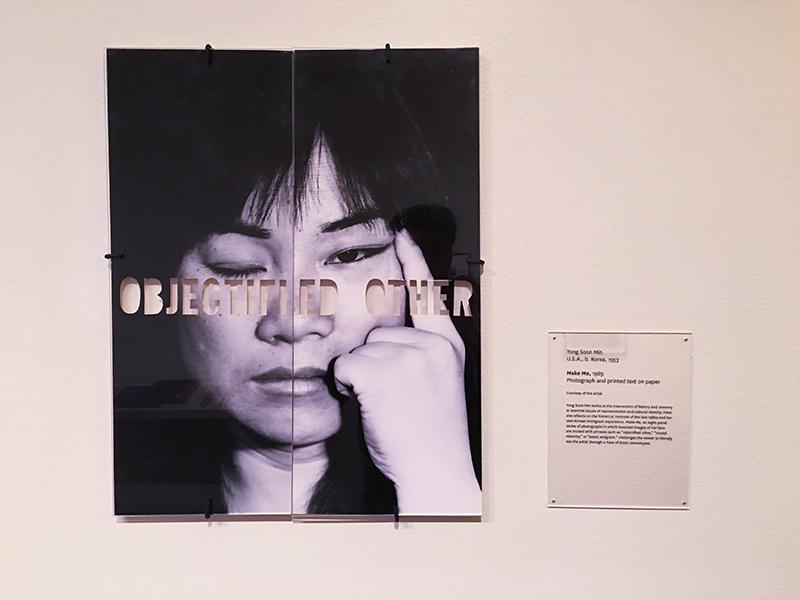“Who We Be” art exhibition: Race still divides us
April 21, 2016
Who would have figured that such a small room, what appeared to have a maximum persons capacity of 10 people, could carry 50 years of America’s greatest racial struggles and cultural endeavors.
Available until Aug. 29, the “Who We Be” art exhibition in the Cantor Center for Visual Arts at Stanford University displays artworks selected from Stanford’s Institute for Diversity in the Arts.
The exhibit brings attention to the trials and tribulations of minorities in America, including the Dutch colonization of Native Americans, the Watts riots and Black Power. The pieces show that social movements have continually adapted overtime to address the ways in which a group of people, or a particular race in that matter, becomes a subject of violence, prejudice or bias.
Arranged in a decorative manner along walls, artworks, varying from photographs to paintings and jewelry to poetry, communicate the importance of critically evaluating our nation’s current stance on race, equity and human dignity.
A black-and-white photograph of Hispanic, Caucasian and African-American teenagers enjoying music together aside from their differences in appearance is one of the artworks displayed. It is a piece titled “Santa Monica, California” by Garry Winogrand taken in 1978. The image depicts a type of celebration and captures the ambiance of the preceding issue on social discrimination in Southern California and the triumph that followed it.
The art piece relates to the past events, but at the same time makes some of the visitors reflect on our present.
“It’s a great feeling to say that I can live here comfortably as an Asian-American without feeling overly different or excluded from society,” said Momo Hoshi, 20, Stanford University student. “I can’t believe I wouldn’t be able to say the same thing if I lived during the 1960s.”
The artwork at “Who We Be” examines significant cultural and demographic revolutions that transformed and shaped American society today. All at once, the art implies that our country remains separated, and racial progress is still far out of reach, despite all the successful movements.
The evidence for that is the most up-to-date piece of the exhibit, which is the display of “Essence” magazine issue titled “Black Lives Matter.” The piece’s intent seems to be not to show the recent increase of killings of African-American by law enforcement officers, but rather tell the audience that systemic violence against African-Americans never went away.
Sammie Wills, 21, comparative studies race and ethnicity major, said that the increase in visibility about modern violence towards blacks doesn’t mean that it is an increase in how it has happened lately; mistreatment against people of color in the U.S. has happened before and is still happening now.
“I think America has come a long way in terms of recognizing and appreciating diversity, but unfortunately that’s still not the case for certain parts of our country,” Hoshi said. “There are still states in the U.S. where I wouldn’t doubt feeling discrimination based on my skin color.”
The exhibition looks at race as a powerful and unifying force, as well as a work in progress.
“It’s not over,” said Elil Forsmark, 28, teacher at the Scandinavian School in San Francisco. “We are still facing the fight for modern, racial equality,”


